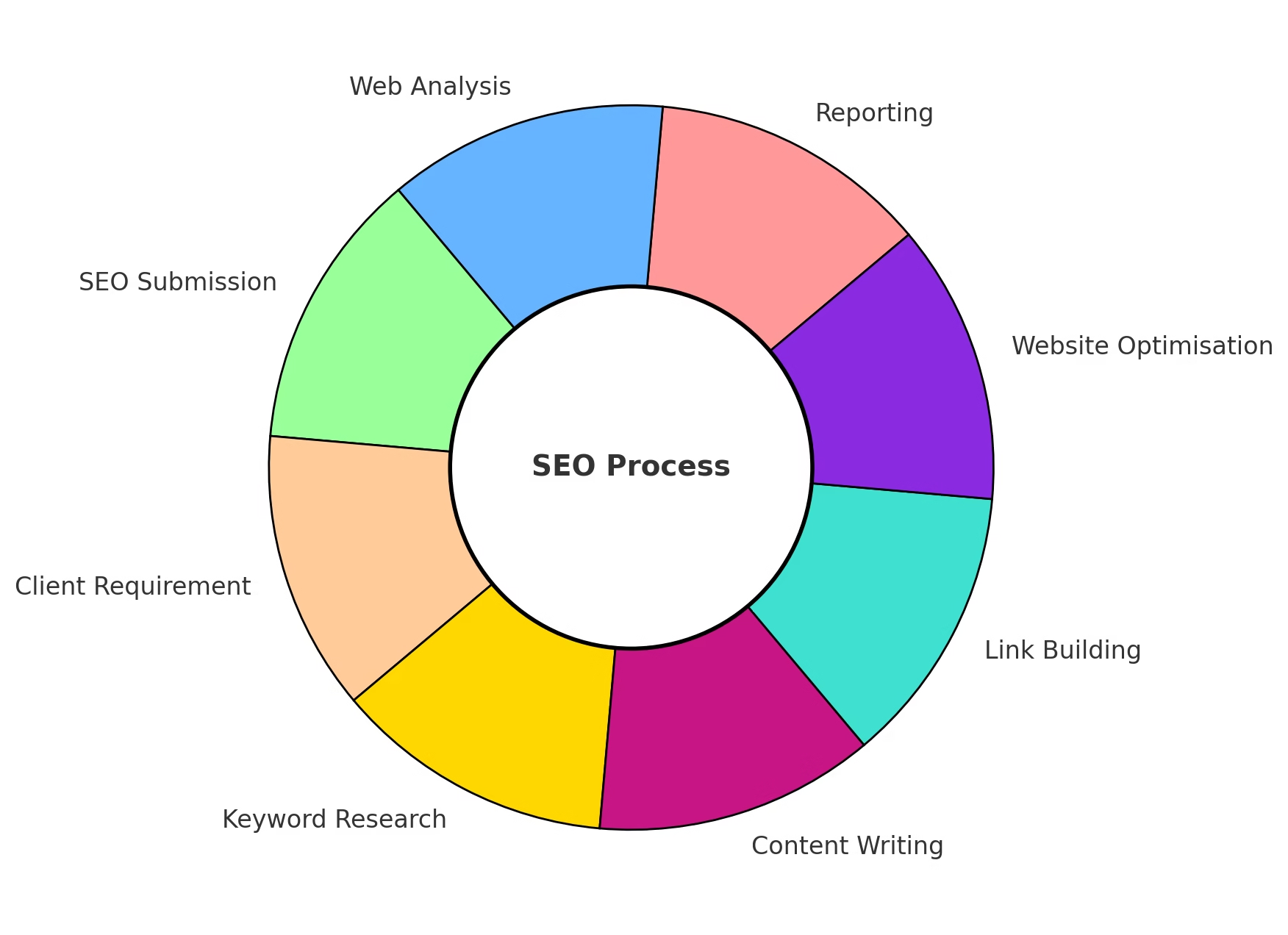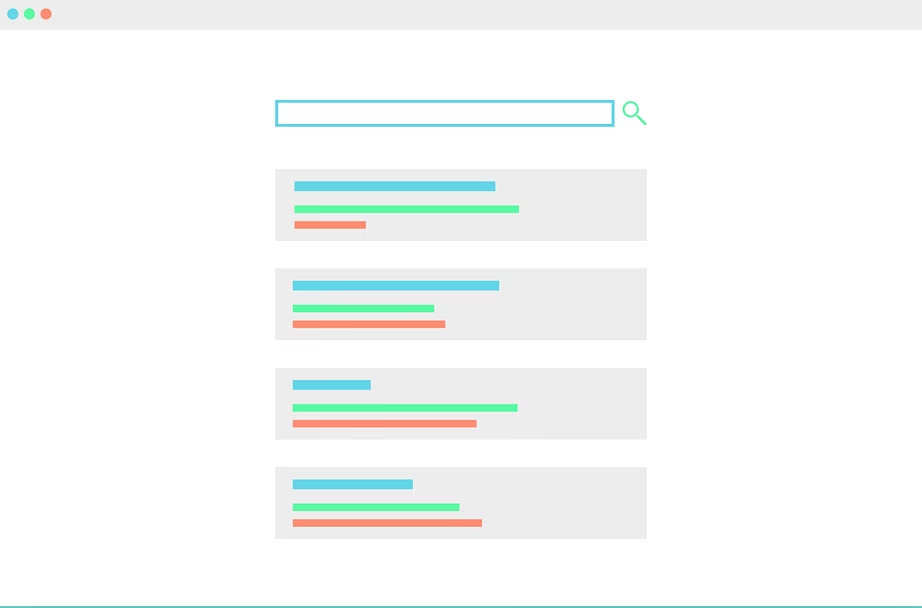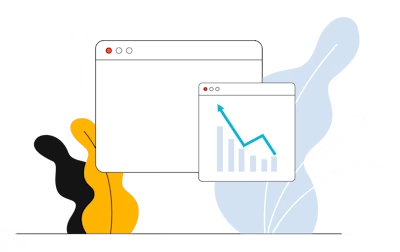Introduction to SEO
A Practical Guide for Beginners to Boost Online Visibility and Grow Your Audience
In today’s digital world, having a strong online presence is crucial for businesses and individuals alike. One of the most effective ways to achieve this is by using Search Engine Optimisation (SEO) to boost your website’s rankings in the non-paid, organic search results.
SEO involves making strategic changes to your website to rank higher in the organic section of Search Engine Results Pages (SERPs). This can increase your visibility, attract more traffic, and ultimately lead to higher conversion rates, revenue, and brand awareness.
In this guide, we’ll cover the key components of SEO and provide actionable tips on how to improve your website’s rankings. Let’s dive into the world of SEO together!

What Is SEO and Why Does It Matter?
Search Engine Optimisation is all about helping search engines—like Google, Bing, and Yahoo understand the purpose and quality of your website content so they can show it to the right audience.
Unlike paid ads, SEO focuses on organic search traffic, which means people discover your site naturally through search engines. This kind of visibility is free, sustainable, and builds long-term authority.
Think of SEO as planting seeds in your digital garden. With the right care, these seeds grow into long-lasting visibility that drives relevant traffic to your site without paying for every single click.
How Do Search Engines Work?
By optimising these factors, you increase your website’s chances of ranking higher in search engine results.
To rank a website, search engines follow three main steps:
- Crawling: Search engines use automated bots (called “spiders”) to browse the internet and discover new or updated pages.
- Indexing: Once a page is found, it’s stored (or “indexed”) in a huge database so it can appear in search results when someone types in a relevant query.
- Ranking: Search engines then analyse how relevant and authoritative your content is based on hundreds of factors—like keywords, backlinks, and user behaviour—to determine where it should rank.
Core SEO Ranking Factors
Here are the major elements that influence how search engines rank your website:
- Keywords: Matching the words people are searching for.
- Content Quality: Providing in-depth, useful information.
- Backlinks: Getting other reputable websites to link to yours.
- Mobile-Friendliness: Ensuring your site works well on smartphones.
- Page Speed: How fast your site loads for users.
- User Experience (UX): Clear navigation, minimal clutter, and strong structure.
Each of these plays a part in how your website is evaluated and ranked.
Keyword Research: The Secret to SEO Success
keyword research. is the foundation of SEO. Here’s how to do it right:
- Use keyword research tools: Tools like Google Keyword Planner and SEMrush can help identify popular keywords with low competition.
- Focus on long-tail keywords: More specific phrases (e.g., “Small business marketing strategies for social media”) rank easier than generic terms.
- Consider user intent: Understand why users search for something and match your content to their needs.

Tip: Create a spreadsheet of keywords and group them by topic or theme to help structure your content strategy.
On-Page Optimisation: Make Your Content SEO-Friendly
On-page SEO involves optimising elements within your website. Key factors include:
Key on-page elements to optimise:
- Title Tag: The clickable headline in search results. Include your main keyword.
- Meta Description: A brief summary that appears under the title. Make it persuasive and keyword-rich.
- Headings (H1, H2, H3…): Use headings to break up content and signal structure.
- URL Structure: Keep URLs short, descriptive, and keyword-focused.
- Alt Text: Describe your images for accessibility and image search visibility.
- Internal Linking: Link to related pages within your site to keep users engaged and improve crawlability.
Remember: On page SEO isn’t just about pleasing Google it’s about making your content genuinely helpful and user-friendly.
Content Is Still King
Quality content is at the heart of any SEO strategy. It should be original, comprehensive, and optimised for humans, not just algorithms.
Here’s how to ensure your content performs well:
- Answer specific questions clearly.
- Use a natural writing tone that matches your audience.
- Keep paragraphs short and easy to scan.
- Use bullet points and visuals to enhance understanding.
- Update content regularly to keep it fresh and relevant.
Off-Page SEO: Boosting Your Site’s Reputation
Off-page SEO focuses on how your site is perceived across the internet. The main goal here is to build trust and authority.
Top off-page strategies:
- Backlink Building: Earn links from reputable websites. Think industry blogs, press features, or digital PR.
- Guest Blogging: Write valuable content for other platforms in exchange for a backlink.
- Social Media Promotion: Share your content on platforms like LinkedIn, X (Twitter), and Instagram.
- Online Reputation Management: Engage with reviews, respond to feedback, and build a consistent brand voice.
Quality backlinks act like digital votes of confidence. The more you have from respected sources, the better your authority.
Local SEO: How to Rank for Location-Based Searches
If you have a local business, optimising for local searches is crucial:
- Create a Google My Business listing: This is a free listing that appears in Google search results and maps by signing up to a Business Profile on Google.
- Use location-based keywords: Add city or region-specific keywords (e.g., “London digital marketing agency”).
- Encourage Reviews: Positive customer reviews boost credibility and improve rankings.
- List your business in local directories: Add to directories like Yell, Yelp UK, and Thomson Local.
Measure SEO Success
SEO is an ongoing process. You need to track your performance to understand what’s working and what needs refining.
Key SEO metrics to monitor:
- Organic Traffic: Visitors coming from unpaid search results.
- Keyword Rankings: Where your pages show up for target search terms.
- Bounce Rate: A high rate might mean your content isn’t meeting user expectations.
- Conversion Rate: Are your visitors taking action (e.g. booking, signing up, buying)?
- Domain Authority: A score from Moz or Ahrefs that estimates your site’s reputation.
Recommended tools:
- Google Search Console: Monitor how Google sees your website.
- Google Analytics: Track user behaviour and conversions.
- SEMrush / Ahrefs / Moz: Advanced tools for keyword tracking and competitor research.

Final thoughts
SEO can feel overwhelming at first, but it’s one of the most cost-effective, long-term marketing strategies you can invest in. The key is to start small, stay consistent, and always prioritise value for your audience.
Whether you’re running a blog, building an e-commerce brand, or launching a new venture, understanding the fundamentals of SEO will put you ahead of the competition and build a strong, sustainable digital presence.





